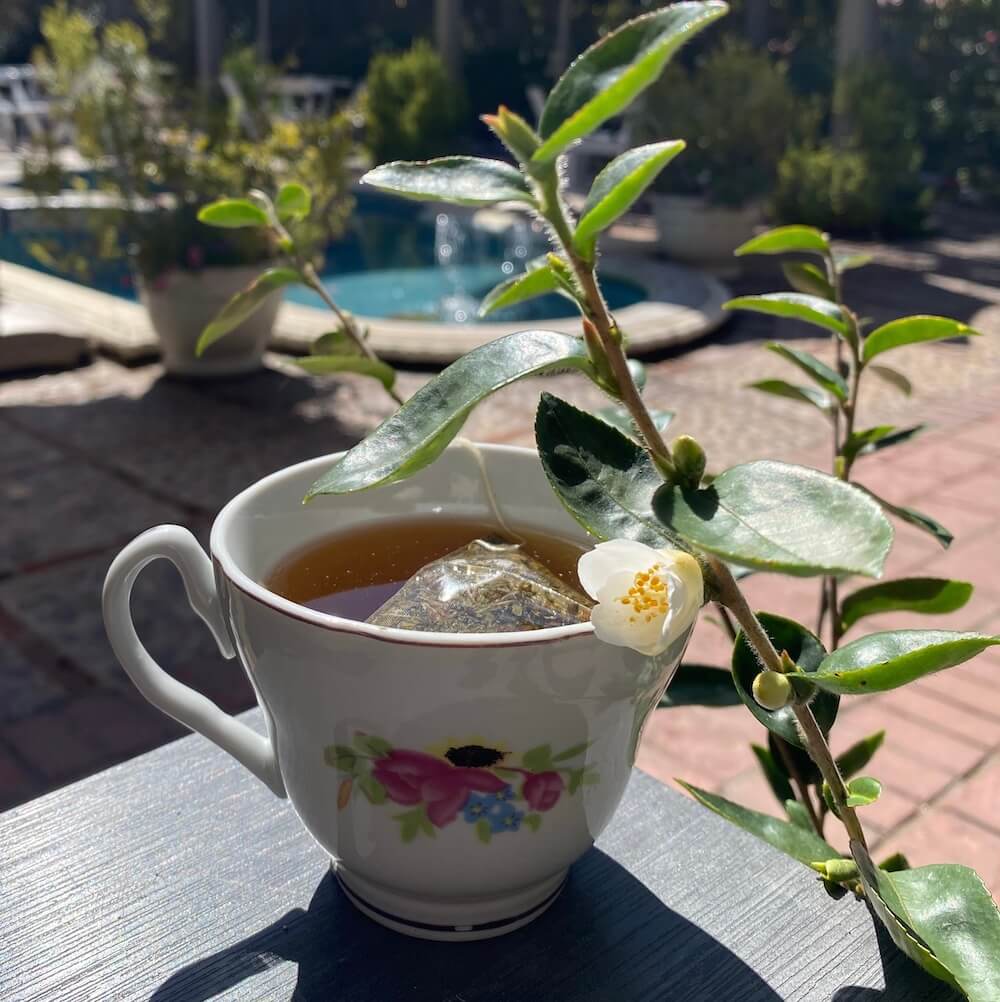Celebrating Women in Science: Michiyo Tsujimura and the Health Benefits of Tea

Kiyoko Nakatsui
Education Coordinator
Let’s spill the tea! We love it in our drinks, our food, even our skincare. I’m talking about green tea. Today green tea is so mainstream you can find it at your local Starbucks or coffee shop as a matcha latte. So many things have a version that is matcha flavored that some people consider it “basic” or a “personality type”. Green tea itself can be bitter, so why do so many people enjoy drinking it? Well, number one we tend to add a lot of sugar to mask that bitter flavor and number two we know it provides us with many health benefits. How do we know about these health benefits? Michiyo Tsujimura’s groundbreaking research is why. Before we talk about her, let’s talk about the plant itself.
Camellia sinensis, more commonly known as the Tea Camellia, is probably the most widely grown Camellia in the world. It’s a hardy evergreen shrub or small tree that is traditionally used for caffeinated teas. As leaves begin to emerge in spring, the plants are harvested and processed in different ways to create white, green, oolong, and black tea. There are two major varieties, Camellia sinensis var. sinensis and C. sinensis var. assamica. The prior originating in China and the later in northern India. The different varieties, climate, harvest, oxidation, and processing of the leaves give differences in taste, color, and aroma to the teas.
Now let’s get back to Dr.Tsujimura. She was the first woman in Japan to receive a PhD in agriculture for her research into the components of tea. Initially she worked as an unpaid assistant at Hokkaido Imperial University in the food nutritional laboratory of the agricultural chemistry department. Female students were not accepted at the university at that time, but later on she did begin working as a researcher. She then continued her research at the Riken Research Institution in a joint research project with Seitaro Miura. It was during this time that her pioneering research began.
Before we talk about her research let’s talk about the plant itself. Unlike many other species of camellia it is heat and drought tolerant and does well in full sun. It is slow-growing, can be easily maintained as a hedge, screen, foundational, patio, or container plant. They can grow to 10 to 15 feet in height, but are usually trimmed below that. If you wish to use the leaves from your plant for tea, prune it back to four or five feet just before spring growth to encourage shoots. The youngest leaves are prized for their quality and flavor. Its evergreen leaves are about five inches long, leathery, serrated, elliptic, glossy, and dark green. Small white flowers on the plant attract bees and the plant is mildly resistant to damage from deer.
From the leaves of this plant Dr.Tsujimura identified its chemical components. With her colleague, Dr. Miura, they discovered green tea to be a natural source of vitamin C. Their research led to an increase in the amount of green tea being exported to North America. With further research, Dr. Tsujimura was able to isolate more of its chemical compounds. Two notable findings were the flavonoid catechin and tannin. Catechin is responsible for the bitter taste in the tea and she was able to extract tannin in crystal form from the green tea. These findings would further solidify green tea as a staple in healthy diets.
In a time when not many women were in science, she was able to make a huge contribution to her field. After her retirement from research she continued to teach and lecture at various women’s universities. She was even awarded the Japan Prize of Agricultural Science in 1956 for her research and conferred the Order of the Precious Crown of the Fourth Class in 1968. Her legacy continues to live on through a stone memorial honoring her achievements installed in her birthplace of Okegawa City. The next time you sit down for a cup of tea and enjoy the flavors, remember the woman behind the groundbreaking research that catapulted tea to the top of our health food lists. And that’s the tea!


